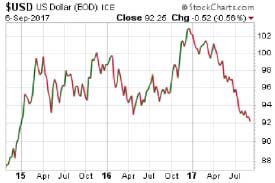
Wearable fitness makers are increasingly interested in tracking our vitals. Now Fitbit has announced a collaboration with glucose monitor company Dexcom to develop and market products to help those with diabetes better manage the disease, starting with Fitbit’s Ionic Smartwatch.
Starting in 2018, the Fitbit Ionic will show users data from the Dexcom G5 Mobile sensor, which is worn just under the skin and can show vitals every 5 minutes. This means you will have to insert the $900 sensor first.
The Dexcom sensor is also supported by the Apple Watch[1], via a reroute through the iPhone but will soon be on the Watch itself through core Bluetooth, which is coming in watchOS4.
Tracking using Fitbit and Apple Watch is still rather difficult if you can’t afford Dexcom’s monitoring device. However, for those already with the device implanted it could prove useful. More than 422 million people[2] around the world have diabetes, a fraction of whom are presumed to be using a wearable for tracking their blood glucose levels.
“The collaboration between Dexcom and Fitbit is an important step in providing useful information to people with diabetes that is both convenient and discreet,” said Dexcom CEO Kevin Saye in a statement. “We believe that providing Dexcom CGM data on Fitbit Ionic, and making that experience available to users of both Android and iOS devices, will have a positive impact on the way people manage their diabetes.”...
Featured Image: lya S. Savenok / Stringer/Getty ImagesReferences
- ^ Apple Watch (www.dexcom.com)
- ^ 422 million people (www.who.int)
Read more from our friends at TechCrunch
“Frustration” no longer adequately describes what reformers in Congress – along with millions of investors and taxpayers who voted for reform – are feeling. For many, hopelessness is beginning to set in on the prospects for tax, budgetary, and monetary reform following Wednesday’s GOP capitulation on the debt ceiling.
Democrats shamelessly exploited the Hurricane Harvey disaster to couple the $7.85 billion disaster aid package with demands on unrelated issues in the budget. Congress didn’t pay for the bill with offsetting spending cuts, as the Club for Growth and other fiscal conservatives had urged.

Instead, this emergency spending (and more to come) will simply be added to the national credit card.
If there’s any fiscal upshot, it could be for those holding contra-dollar investments such as precious metals. The U.S. Dollar Index has been in a downtrend all year. It may now have impetus to fall further.
Months of legislative failure and inaction have caught up with Republicans. A recent Fox News poll shows that only 15% of voters approve of the job Congress is doing. Now – faced with a disaster in Texas and another one on the way in Florida that could inflict hundreds of billions of dollars more in damage – Republicans are being pushed by circumstances beyond their control.
Their president has all but given up on them. He is, understandably, beyond frustrated with feckless Republican leadership on Capitol Hill.
House Speaker Paul Ryan and Senate spoiler vote John McCain have seemingly devoted more effort to publicly criticizing President Donald Trump’s choices of words than passing GOP legislation.
This week, President Trump foisted the “DACA” immigration issue upon a Congress that doesn’t want to have to deal